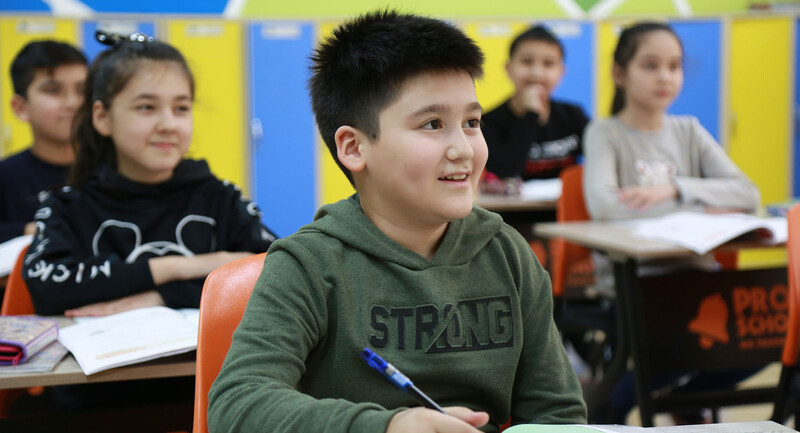In her widely read article on relational discipline in our October issue, Micere Keels notes that one of the main lessons educators have learned during the pandemic is that "student engagement is everything." Indeed, she argues that the best way to help students recover from the disruptions of the past year and a half, both academically and emotionally, is through engaged instructional time. As distinct from rote learning or coverage-based teaching, this is instructional time that combines elements of emotional connection, behavioral participation, and cognitive investment. During engaged instructional time, Keels writes, students perceive their learning as "meaningful and relevant."
Keels's emphasis on the importance of student engagement in pandemic recovery is echoed strongly throughout the current issue of Educational Leadership, which is all about engagement and motivation. In effect, this issue amplifies the message—or reminder—to school leaders and policymakers: student engagement is everything. In the opening interview, for example, instructional expert Zaretta Hammond describes student engagement—a byproduct, for her, of content relevance and rigor—as a critical aspect of educational equity (p. 14). Hammond worries that the current focus on "learning loss" will drive some schools to double down on "the pedagogy of compliance" and remediation, especially for students of color, and further exacerbate gaps in meaningful learning opportunities. Instead, she says, we need to "make up ground by actually using intellectual curiosity to turbocharge students' engagement. We need to water up the curriculum and instruction, not water it down." Similarly, in his article, educational change scholar Andy Hargreaves argues that the most constructive paths forward from the pandemic for schools "will be those that increase students' engagement with their learning, with each other, and with their lives" (p. 26). For Hargreaves, this means casting a skeptical eye on prescribed recovery strategies centered on "deficit-focused testing approaches," isolated social-emotional learning initiatives, and wholesale digital-learning transformations—and focusing instead on curriculum that is "infused with meaning and purpose." After a year-plus of distance learning, in a period of great social change and crisis, Hargreaves writes, "the key thing is that students see the point of what they're learning, to spur their motivation and help them persevere."
* * *
For educators looking to pursue the path of engagement, this issue offers a range of ideas and strategies. Many articles explore key instructional shifts to enhance students' connection to learning. Mike Anderson, for example, offers classroom-focused tips for tapping into students' intrinsic motivation (p. 20), while Eric M. Anderman and Adriana I. Martinez Calvit discuss strategies for orienting deeper learning instruction around mastery goals rather than performance goals (p. 32). In an especially powerful piece, Chad Prather recalls how a single line from a TV show—along with some creative thinking—gave him the hook he needed to better connect a unit on Malcolm X to his students' "present-oriented" lives (p. 52). Their responses, in turn, gave him greater insight into their interests and needs—and the imperatives of effective lesson planning. Other articles focus on curricular change. Hargreaves points to a network of schools in the Pacific Northwest that has sought to heighten student engagement through ambitious "hands-on projects connected to local culture or local problems" and current social and global issues. (In this example, he echoes Hammond's call for greater use of authentic place- and problem-based learning projects.) On a smaller but no less meaningful scale, language arts teacher Ariel Sacks reflects on the power of creative writing to bring her students into a state of "flow" and productive struggle, even when they least expect it (p. 71). We can draw many lessons on engagement from these and other articles in this issue. A key one for pandemic recovery might be that, as Heidi Hayes Jacobs and Allison Zmuda write about lesson planning, instruction must be less removed from "the desired audience: the students" (p. 44). Reflect & Discuss
"6 Instrinsic Motivators to Power Up Your Teaching" by Mike Anderson
➛ Of the six intrinsic motivators, which ones are already strong in your practice? Which might be strengthened?
➛ What specific actions could you take to build students'—or even your faculty's—sense of competence?
"The Future of Learning Lies in Engagement" by Andy Hargreaves
➛ In what ways could you or your school infuse more meaning and purpose into your curriculum? What specific projects or learning priorities come to mind?
➛ Do school systems focus enough on student engagement? If not, why do you think that is?
➛ What obstacles most get in the way of making instruction more engaging in your school?
"Is Your Deeper Learning Instruction Boring Students?" by Eric M. Anderman and Adriana I. Martinez Calvit
➛ How are motivation and deeper learning linked?
➛ Can you think of ways you can add more choice and less competition to your instruction?
➛ What motivational strategies can you use in your deeper learning lessons to ensure students won't get "bored"?
"Streamlined Lesson Planning for Learner Engagement" by Heidi Hayes Jacobs and Allison Zmuda
➛ Who is the primary audience for lesson and unit planning documents in your school? How could these materials be more student-facing?
➛ How have remote and digital shifts during the pandemic changed your lesson planning process?
➛ Could a model like learning sets help you create a more compelling curricular narrative? Why or why not?
"The Engagement Illusion" by Neil Gupta and Douglas Reeves
➛ How do you tell if students are engaged? Did reading this article make you rethink those indicators?
➛ How do you identify the interests of each of your students?
➛ What are ways you can differentiate your lessons and monitor student engagement to ensure productive struggle is occurring?
"What Can Teachers Do to Engage Anxious Students?" by Jessica Minahan, Sarah Ward, and Kristen Jacobsen
➛ What transition during the school day most often causes your anxious students to disengage? What strategy outlined by the authors could help?
➛ How have you seen inaccurate thinking interfere with a student's ability to initiate, persist in, and/or stop an activity?









